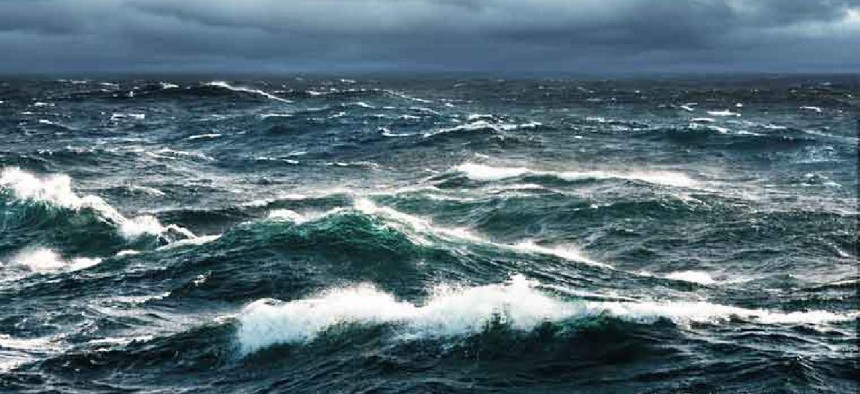DARPA's Sea Train: Unmanned vessels that master the waves


Connecting state and local government leaders
By enabling "Sea Trains" of connected, autonomous unmanned vessels, DARPA hopes to reduce susceptibility to wave resistance and increase geospatial coverage of maritime operations.
The Defense Advanced Research Projects Agency wants to expand naval operations by exploiting the efficiencies of connected autonomous surface vessels that have reduced resistance to waves. By enabling "Sea Trains" of connected vessels, DARPA hopes to provide more dynamic, rapid response capabilities for surveillance, logistics, electronic warfare, expeditionary warfare, and offensive missions while increasing the geospatial coverage of maritime operations.
Currently the 12- to 50-meter-long medium unmanned surface vessels (MUSVs) have limited range because their smaller platforms are more susceptible to wave resistance. At-sea refueling, strategic airlifts or increasing the size of the size of the MUSVs – all potential solutions to range issues -- increase the MUSVs' vulnerabilities against adversaries.
DAPRA thinks a connected group of MUSVs that travel in a line to decrease the wave-making resistance may revolutionize unmanned surface vessels development. It is considering approaches where the MUSVs are either physically connected or connectionless, traveling in close formation to minimize the resistance on the Sea Train.
An autonomous four-vessel Sea Train would be capable of long range transit, with MUSVs independently peeling off for operations and re-aggregating for the return trip.
DARPA described how the Sea Train concept would operate:
The Sea Train vessels independently depart a port under their own power to reach a sortie point notionally 15 [nautical miles, or nmi] from the pier. The four independent vessels then begin the Sea Train mission by assembling in Sea Train configuration and completing a notional 6,500 nmi transit through varied sea state conditions that might require re-routing to optimize travel times or vessel seakeeping. The Sea Train then arrives at a disaggregation point, where the four vessels begin independent yet collaborative operations consisting of transits, loiters, and sprints in varied sea state conditions. The vessels then arrive at a sortie point to begin the aggregation process and conduct a Sea Train sprint from the operational area. The Sea Train then returns to normal transit speed for the remainder of the transit in varied sea state conditions, disaggregates outside of port and the vessels self-navigate to a pier.
To make the Sea Train a reality, DARPA is looking for proposals that address the physical characteristics of the vessels – hull design, approaches for connecting MUSVs and integrated propulsion systems -- as well as a control system that balances mission plans, environmental conditions, vessel position and velocity to maximize efficiency.
The open-standard autonomous control architecture must support real-time processing that regulates the Sea Train's performance in various missions and changing environmental conditions. It will require sensors for route optimization that "see" the nearby ocean environment, identifying the spacing and orientation of vessels within the Sea Train as well as the structural loads on connectors or contact points.
Autonomous features include the ability to connection and disconnect MUSVs in complex operational and environmental conditions and regulation of behaviors to avoid collisions. Decision algorithms that share data on propulsion, fuel consumption or fuel capacity across USVs in the Sea Train will ensure each vessel has maximum fuel capacity for independent operations.
The Sea Train should be able to operate up to Sea State 5: moderate waves, many white caps, wind speed of 17 to 21 knots and wave height of 6.6 feet. Proposers should develop systems that use no human intervention for the vessel operations, connections or disconnections and run in communications and GPS-denied environments.
The Sea Train program is expected to be a 36-month, two-phase program. Multiple awards are expected. Read the broad agency announcement here.
NEXT STORY: 2D and 3D combo could keep Moore’s Law going





